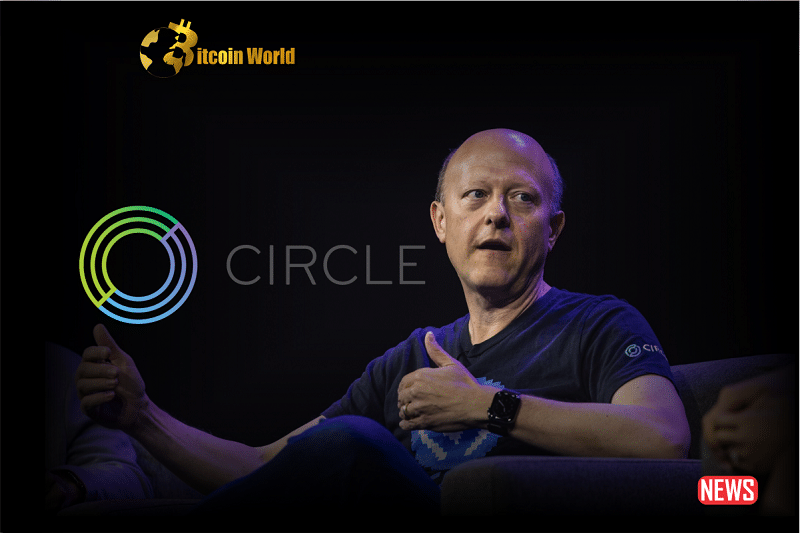Hold on to your hats, crypto enthusiasts! There’s a fascinating story unfolding in the world of stablecoins, and it might surprise you. We often hear about cryptocurrencies within the U.S., but the real action for one major player, USD Coin (USDC), is happening far beyond American shores. Ready to dive in?
The Big Reveal: USDC’s Global Footprint
Circle’s CEO, Jeremy Allaire, recently dropped a bombshell on Twitter, revealing that a whopping 70% of USDC adoption originates from countries outside the United States. Yes, you read that right! This isn’t just a niche trend; it’s a significant shift in how this stablecoin is being utilized globally. Forget the notion of USDC being solely a U.S.-centric phenomenon. The data paints a much broader picture.
Allaire specifically pointed to the rapid growth of USDC in emerging and developing markets, particularly across Asia, Latin America (LATAM), and Africa. Think about that for a moment. These are regions where access to traditional financial services can be limited or expensive. Could USDC be offering a valuable alternative?
Echoes from the Competition: USDT’s Global Grip
Interestingly, this observation isn’t unique to USDC. Paolo Ardoino, the CTO of Tether (the issuer of USDT, the largest stablecoin by market cap), has echoed similar sentiments. He’s highlighted the significant traction USDT is gaining in non-U.S. regions, even describing it as a “safe tool for emerging markets and developing countries” back in February. This suggests a broader trend of stablecoin adoption filling a crucial need in these areas.
Why the Global Appeal? Unpacking the Benefits
So, what’s driving this surge in USDC adoption outside the U.S.? Let’s break it down:
- Access to USD Stability: In regions with volatile local currencies, a USD-pegged stablecoin like USDC offers a haven of stability. This can be crucial for businesses and individuals looking to preserve value.
- Faster and Cheaper Transactions: Compared to traditional banking systems, cryptocurrency transactions can be significantly faster and less expensive, especially for cross-border payments.
- Financial Inclusion: Stablecoins can provide access to financial services for those who are unbanked or underbanked, opening up new economic opportunities.
- Remittances: Sending money across borders can be costly and time-consuming. Stablecoins offer a more efficient alternative for remittances.
- Growing Digital Economies: Emerging markets are often at the forefront of digital adoption. Stablecoins fit seamlessly into this landscape, facilitating online commerce and other digital activities.
The Plot Thickens: PayPal Enters the Stablecoin Arena
Just as Allaire was sharing these insights, PayPal announced the launch of its own USD-pegged stablecoin, PayPal USD (PYUSD). This move signals a growing mainstream acceptance of stablecoins, and Allaire himself congratulated PayPal and Paxos (the issuer of PYUSD), expressing excitement about a major internet and payments company entering the space. He believes that regulatory clarity is playing a key role in fostering this expansion.
Navigating the Challenges: Supply and Liquidity
While the global adoption story is compelling, it’s important to acknowledge the challenges. Recent data indicates a decrease in USDC supply since the beginning of 2023, driven by reduced demand and increased redemptions. This has led to a slight dip in USDC’s market share.
Addressing these concerns, Allaire acknowledged that redemptions have been outpacing issuance recently. To put it in perspective, he stated, “Over the past month, we’ve issued $5B USDC, and have redeemed $6.6B USDC.” This highlights the ongoing efforts to manage USDC’s liquidity effectively.
Circle’s Strategy: Strengthening the Foundation
So, how is Circle tackling these challenges and supporting this global growth? Their strategy focuses on:
- Expanding Global Banking Networks: Circle is actively partnering with top-tier banks across key regions worldwide to enhance its liquidity and operational capabilities.
- Transparency and Trust: A recent transparency report revealed that the Circle Reserve Fund, which backs USDC, is primarily composed of highly liquid assets like short-dated US Treasuries and cash. This commitment to transparency builds trust and confidence.
- Regulatory Compliance: Securing a Major Payment Institution (MPI) license from the Monetary Authority of Singapore (MAS) demonstrates Circle’s dedication to operating within regulatory frameworks as they expand their services globally.
What Does This Mean for the Future?
The fact that a significant majority of USDC adoption is happening outside the U.S. is a powerful indicator of the global demand for stablecoins. It suggests that these digital assets are not just a speculative tool but are providing real-world utility in various parts of the world. As Circle continues to build its global infrastructure and navigate the evolving regulatory landscape, the potential for USDC to further impact the global financial system is substantial.
Key Takeaways:
- USDC adoption is predominantly driven by non-U.S. markets, particularly in Asia, LATAM, and Africa.
- Stablecoins like USDC and USDT are filling a crucial need in emerging economies by providing access to USD stability and efficient payment solutions.
- Circle is actively working to enhance USDC’s liquidity and expand its global banking partnerships.
- Regulatory clarity is seen as a catalyst for further growth and adoption of stablecoins.
Looking Ahead
The journey of USDC and other stablecoins in the global financial landscape is just beginning. As adoption continues to rise in non-U.S. regions, it will be fascinating to watch how these digital assets reshape financial interactions and empower individuals and businesses worldwide. Keep an eye on this space – the future of finance is becoming increasingly global and digital.
Disclaimer: The information provided is not trading advice, Bitcoinworld.co.in holds no liability for any investments made based on the information provided on this page. We strongly recommend independent research and/or consultation with a qualified professional before making any investment decisions.


